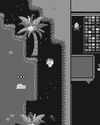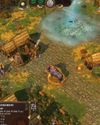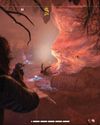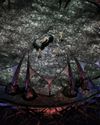
Zooming in on planets from outer space is nothing new: I've been landing on alien worlds in games like No Man's Sky and Kerbal Space Program for years. The difference here is scale. The world Brendan Greene (aka PlayerUnknown) is showing me - the digital planet he's building - is the size of an actual planet.
It's called Artemis, and it's a planet the size of Earth. As I peer over Greene's shoulder at his monitor, the view is from orbit, with roughly half the planet visible in outer space - until he begins zooming in. And in. And in. As we dive toward the planet's surface, terrain appears, resolving into mountains and hills.
Massive forests become individual trees, and as we reach ground level I admire the textures of realistic boulders and rocks. After a quick look around at the scenery, Greene zooms way, way back out until we're up in orbit again, then zooms all the way back into another wilderness landscape of trees, hills and mountains the size of actual mountains. It's hard not to be impressed by the scale of the world and the rendering tech that generated this detailed planet in seconds.
According to Greene, Artemis will be a massively multiplayer sandbox capable of supporting thousands and eventually millions of players at the same time. To accomplish that ambitious goal, Greene decided he needed to build not only a new game engine but an entirely new company: PlayerUnknown Productions. A completed Artemis is still a long way off - some of the technology needed to pull off Greene's vision doesn't even exist yet. But in the years since the studio was formed, it's already come a long way.
SCALING UP
This story is from the {{IssueName}} edition of {{MagazineName}}.
Start your 7-day Magzter GOLD free trial to access thousands of curated premium stories, and 9,000+ magazines and newspapers.
Already a subscriber ? Sign In
This story is from the {{IssueName}} edition of {{MagazineName}}.
Start your 7-day Magzter GOLD free trial to access thousands of curated premium stories, and 9,000+ magazines and newspapers.
Already a subscriber? Sign In

A New Dawn - The rise, fall and rise again of PC Gaming in Japan
The so-called 'Paso Kon' market (ie katakana's transliteration of 'Pasonaru Computa') in Japan was originally spearheaded in the 1980s by NEC's PC-8800 and, later, its PC-9800.

MARVEL: ULTIMATE ALLIANCE
Enter the multiverse of modness.

SLIDES RULE
Redeeming a hated puzzle mechanic with SLIDER

GODS AND MONSTERS
AGE OF MYTHOLOGY: RETOLD modernises a classic RTS with care

PHANTOM BLADE ZERO
Less Sekiro, more Wo Long: Fallen Dynasty

STARR-MAKING ROLE
Final Fantasy XVI's BEN STARR talks becoming a meme and dating summons

THIEF GOLD
Learning to forgive myself for knocking out every single guard.

HANDHELD GAMING PCs
In lieu of more powerful processors, handhelds are getting weirder

FAR FAR AWAY
STAR WARS OUTLAWS succeeds at the little things, but not much else shines

FINDING IMMORTALITY
Twenty-five years on, PLANESCAPE: TORMENT is still one of the most talked-about RPGs of all time. This is the story of how it was created as a ‘stay-busy’ project by a small team at Black Isle Studios